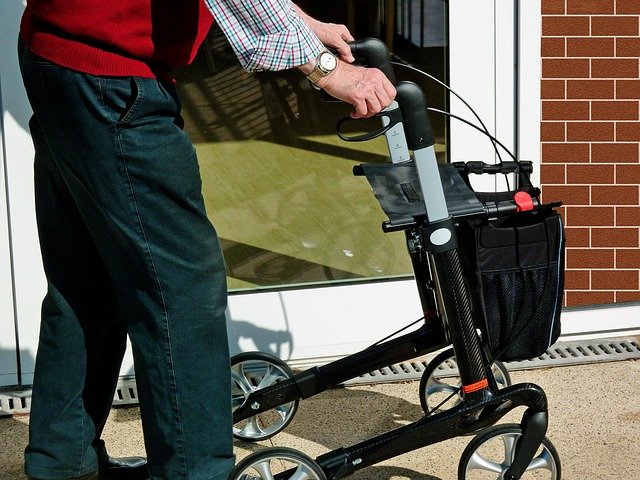Toilet Safety Guardrails: A Comprehensive Guide for Enhanced Bathroom Safety
Toilet safety guardrails are essential bathroom appliances that provide support and stability for individuals with mobility issues, seniors, or those recovering from injuries. These devices can significantly improve safety and independence in the bathroom, a space where accidents are unfortunately common. This article will explore various aspects of toilet safety guardrails, helping you make an informed decision about choosing, installing, and using these crucial safety devices.

How do I choose the right toilet safety guardrail for my needs?
Selecting the appropriate toilet safety guardrail depends on several factors, including the user’s specific needs and the bathroom layout. Consider the following when making your choice:
-
User’s mobility level: Assess the level of support required. Some users may need full support for standing and sitting, while others might only need minimal assistance.
-
Bathroom size: Measure the available space around your toilet. Ensure there’s enough room for the guardrail without obstructing movement or other fixtures.
-
Toilet type: Different toilets (standard, wall-mounted, or elongated) may require specific guardrail models for proper fit and installation.
-
Weight capacity: Check the weight limit of the guardrail to ensure it can safely support the user.
-
Adjustability: Look for guardrails with height and width adjustments to accommodate different users or changing needs over time.
-
Additional features: Some models offer extra amenities like built-in toilet paper holders or storage compartments, which may be beneficial for some users.
What are the different types of toilet safety guardrails available?
Toilet safety guardrails come in various designs to suit different needs and bathroom configurations. The two main categories are:
- Freestanding models:
-
These guardrails are not attached to the toilet or walls.
-
They offer flexibility in placement and can be easily moved or adjusted.
-
Ideal for temporary use or when permanent installation is not possible.
-
May provide less stability compared to attached models.
- Attached models:
-
These guardrails are securely fastened to the toilet or surrounding walls.
-
Offer maximum stability and support.
-
Permanent installation makes them suitable for long-term use.
-
Some models can be folded against the wall when not in use, saving space.
Within these categories, you’ll find various designs, including:
-
Floor-to-ceiling poles with adjustable grab bars
-
Toilet frame rails that surround the toilet
-
Wall-mounted flip-up rails
-
Toilet seat risers with integrated armrests
How do materials and features compare in toilet safety guardrails?
When evaluating toilet safety guardrails, consider the following materials and features:
- Materials:
-
Stainless steel: Durable, rust-resistant, and easy to clean. Ideal for long-term use.
-
Aluminum: Lightweight and corrosion-resistant, suitable for both permanent and portable options.
-
Plastic: Often used in combination with metal for armrests or grip areas. Less durable but more affordable.
- Grip surface:
-
Textured or rubberized grips provide better traction and comfort.
-
Smooth surfaces may be easier to clean but offer less grip.
- Adjustability:
-
Height-adjustable models accommodate users of different heights.
-
Width-adjustable guardrails can fit various toilet sizes and user preferences.
- Weight capacity:
-
Standard models typically support 250-300 pounds.
-
Bariatric options can support up to 500 pounds or more.
- Additional features:
-
Padded armrests for comfort
-
Integrated toilet paper holders
-
Storage compartments for convenience items
How do I properly install and use a toilet safety guardrail?
Proper installation and use of toilet safety guardrails are crucial for ensuring maximum stability and support:
- Installation:
-
For attached models, follow the manufacturer’s instructions carefully.
-
Use appropriate tools and hardware for secure mounting.
-
Consider professional installation for wall-mounted or complex models.
-
Ensure the guardrail is level and stable before use.
- Usage:
-
Familiarize yourself with the guardrail’s features and adjustments.
-
Use both hands when gripping the rails for balance.
-
Avoid putting excessive weight on one side of the guardrail.
-
Regularly check for any loose bolts or signs of wear.
- Maintenance:
-
Clean the guardrail regularly with mild soap and water.
-
Inspect for rust, cracks, or other damage periodically.
-
Tighten any loose screws or bolts promptly.
-
Replace worn grip surfaces or padding as needed.
What are the benefits of toilet safety guardrails for seniors and those with mobility issues?
Toilet safety guardrails offer numerous advantages for seniors and individuals with mobility challenges:
-
Increased independence: Users can safely use the toilet without assistance, promoting dignity and self-reliance.
-
Fall prevention: Guardrails provide sturdy support, reducing the risk of slips and falls in the bathroom.
-
Confidence boost: Knowing there’s a reliable support system can alleviate anxiety about bathroom use.
-
Improved mobility: The rails can assist users in standing up and sitting down, making the process easier and safer.
-
Versatility: Many models can be used for support during other bathroom activities, such as accessing the sink or shower.
-
Caregiver support: Guardrails can make it easier for caregivers to assist individuals with limited mobility.
-
Cost-effective solution: Compared to major bathroom renovations, toilet safety guardrails are an affordable way to enhance bathroom safety.
Toilet safety guardrails are invaluable bathroom appliances that can significantly improve the quality of life for seniors and individuals with mobility issues. By carefully considering user needs, bathroom layout, and product features, you can select the right guardrail to ensure a safer and more comfortable bathroom experience. Proper installation and regular maintenance will help maximize the benefits of these essential safety devices, promoting independence and peace of mind for users and their caregivers alike.




